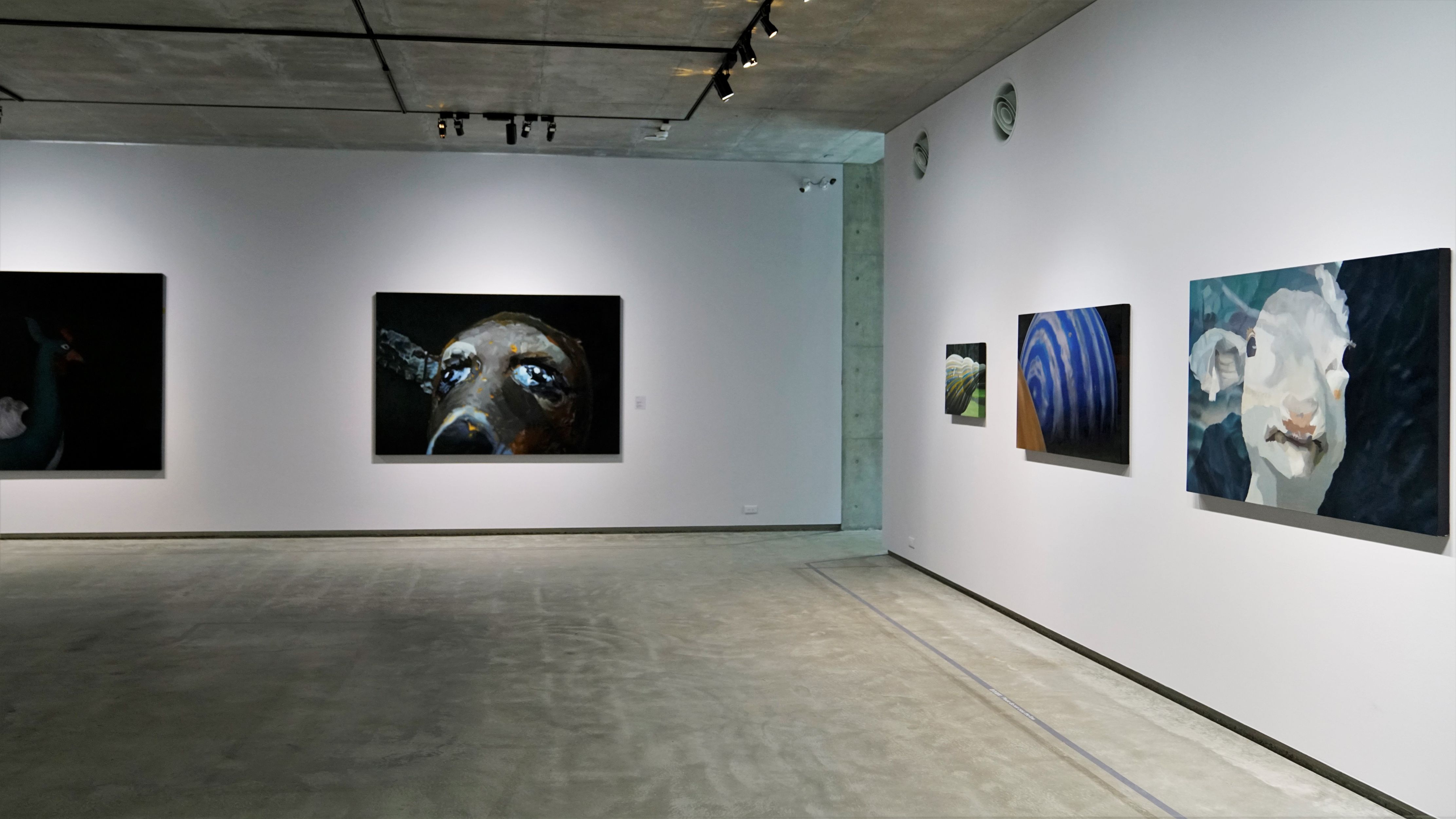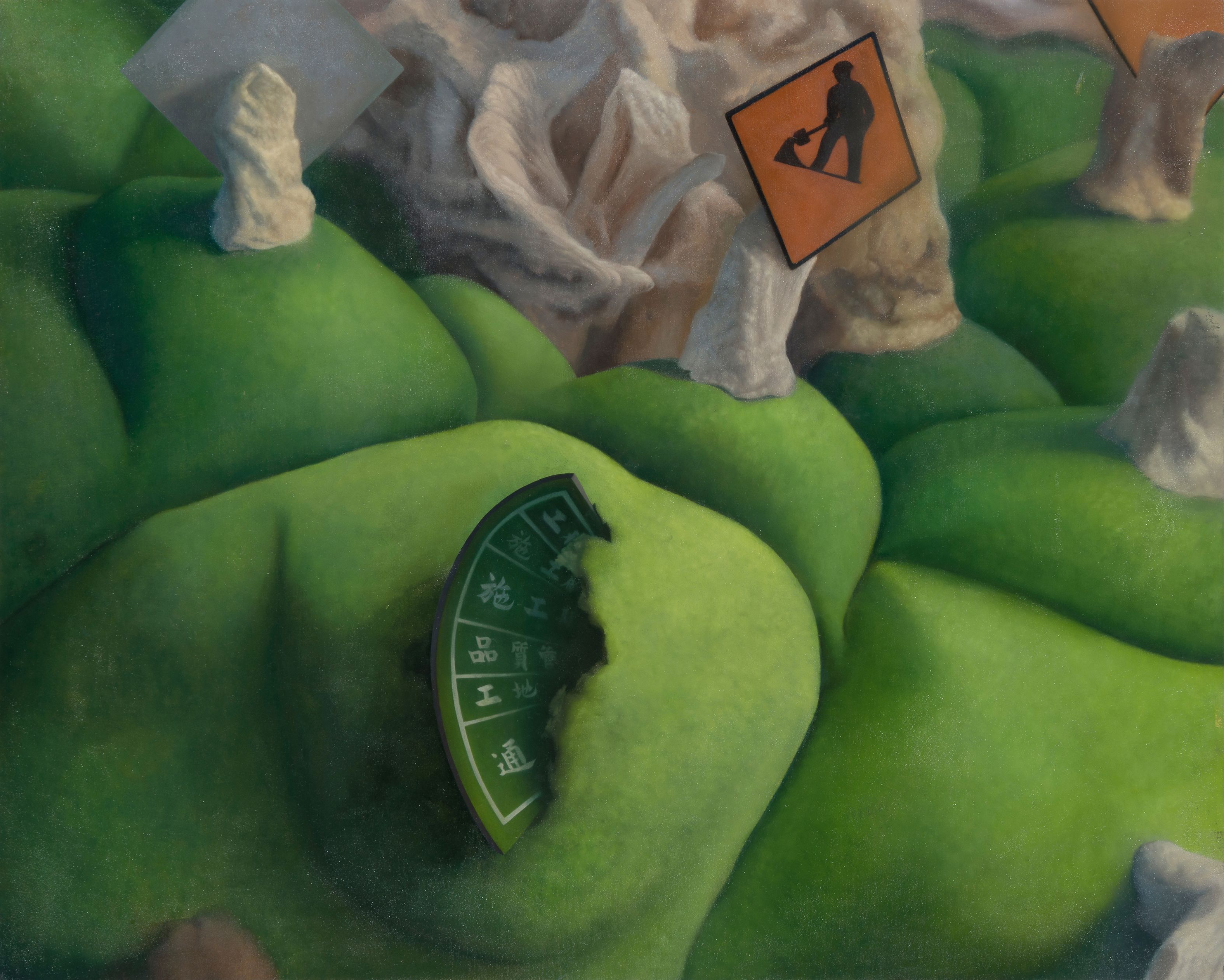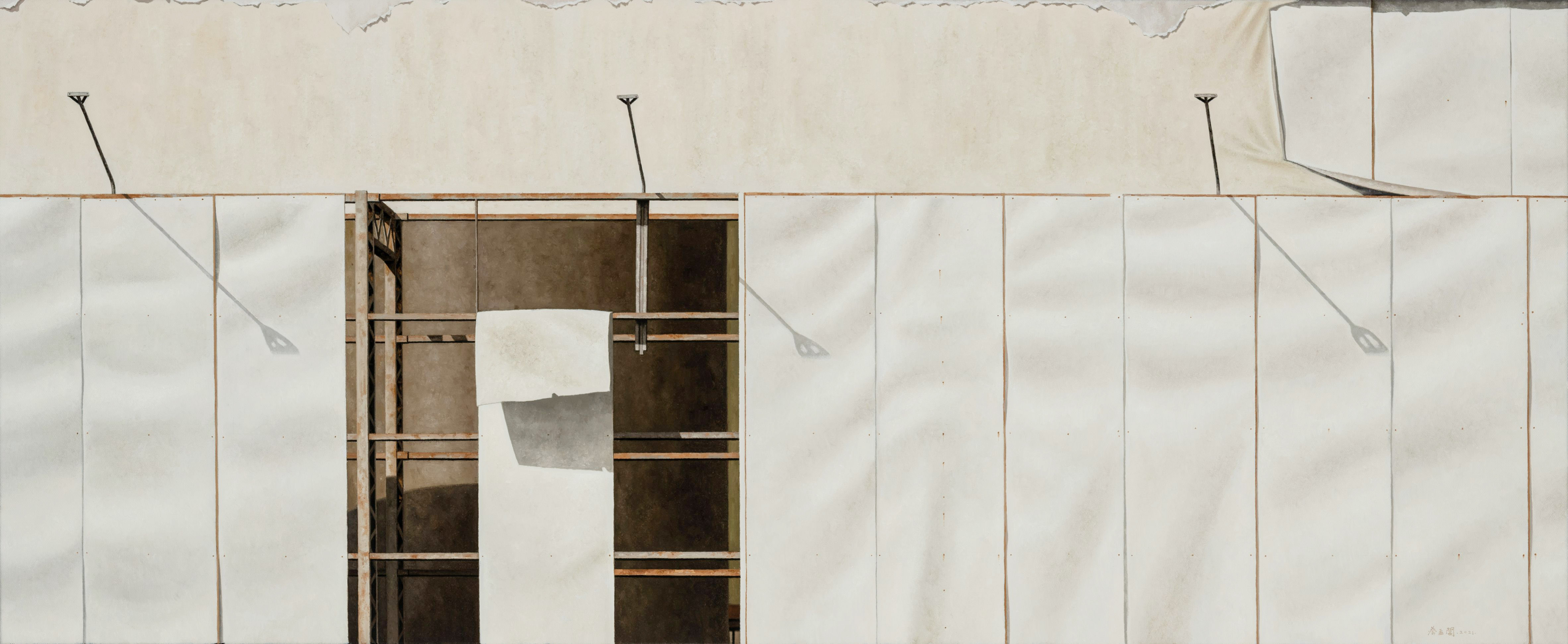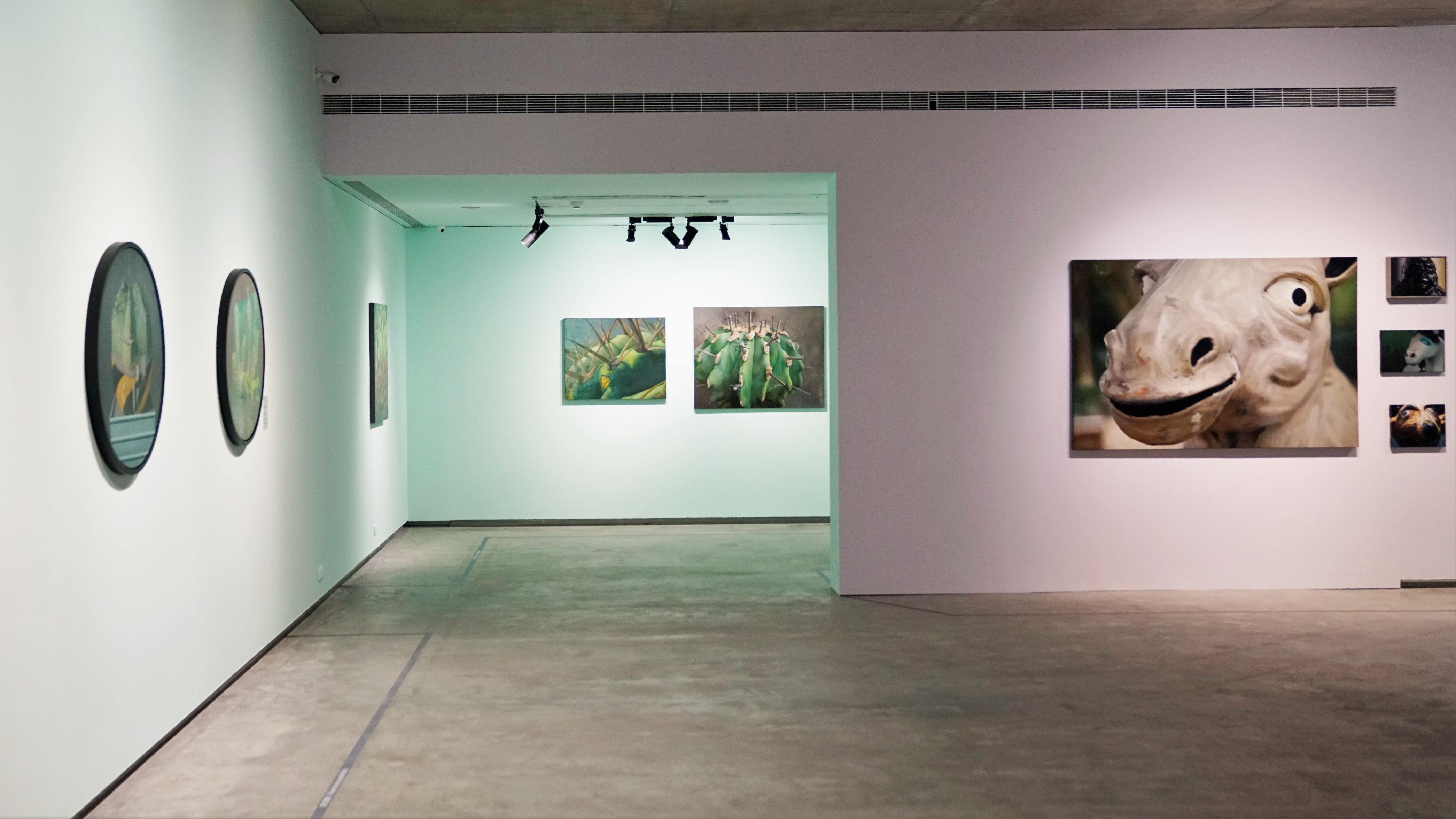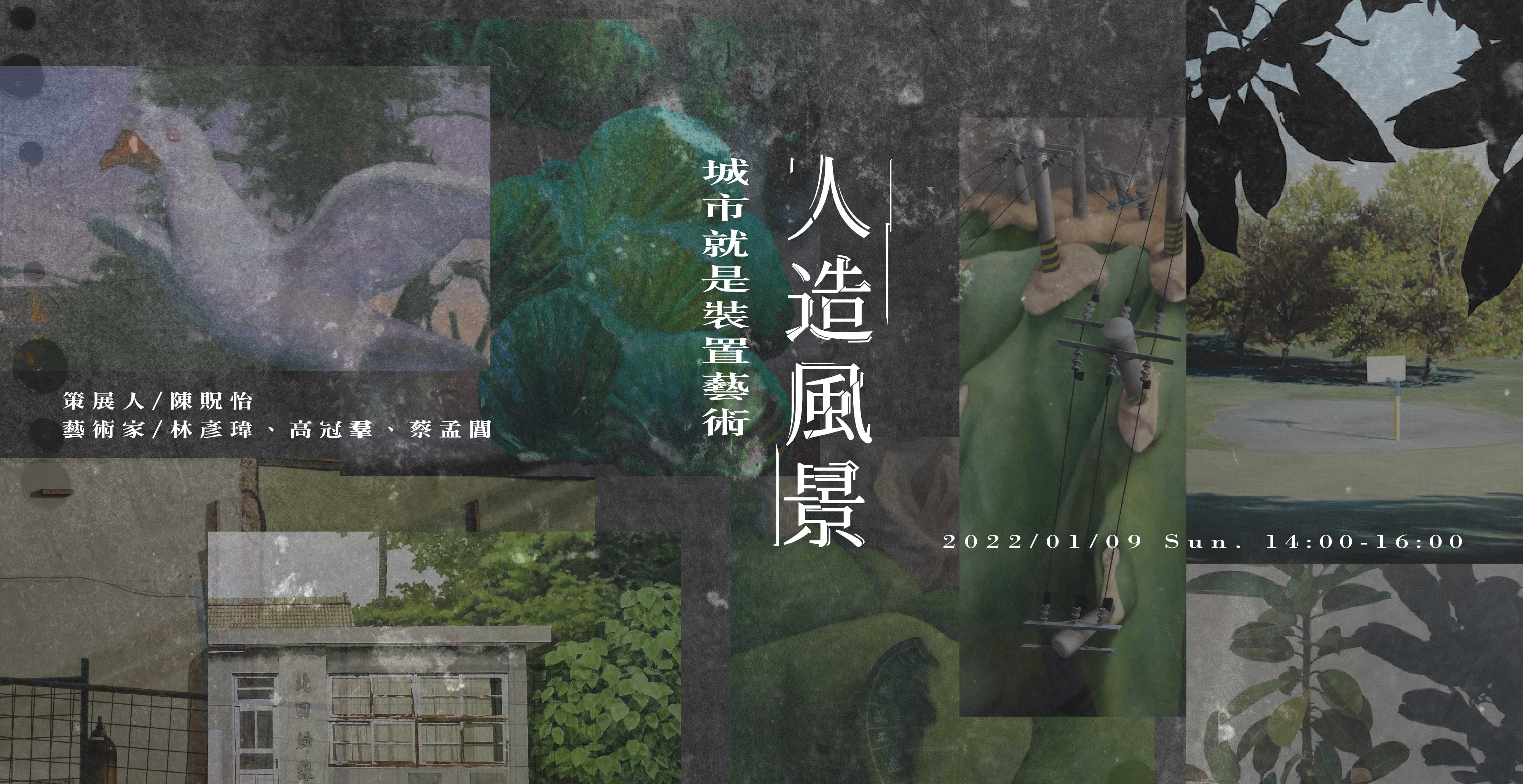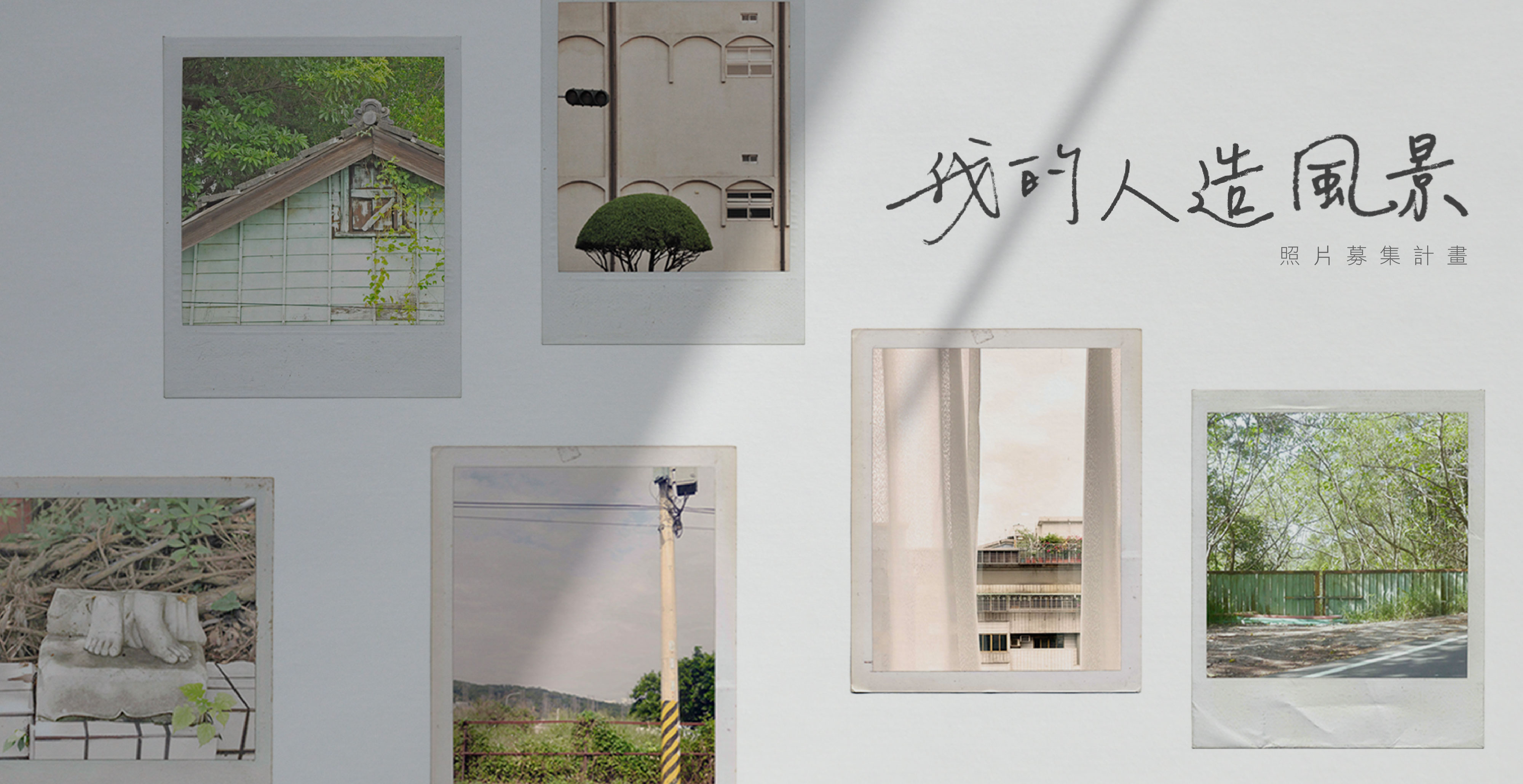Artificial Landscape - City as Installation Art


2022.01.08 - 2022.05.29 | 1F-3F, Yu-Hsiu Museum of Art
Introduction
The word “artificial” in the exhibition title - Artificial Landscape, refers to manmade elements in contemporary landscape in contrast to nature: These elements include things ranging from architecture, infrastructure, roads, parks, amusement facilities, to artificial lighting, etc. Meanwhile, it also refers to the pathways employed by artists to understand this world, based on which they further “create” varying landscapes. The term “create” is used here not to imply artists’ search of novelty in the environment in order to “reveal” a rarely visited place but instead points to how they construct landscapes from scratch through “travel.” American land artist Robert Smithson (1938-1973) once stated that “[b]etween the actual site…and The Nonsite (representation of the site) itself exists a space of metaphoric significance. It could be that ‘travel’ in this space is a vast metaphor.” Travel thus defined is naturally a form of creation; and each creation simply involves a wide range of cultural and natural elements since contemporary city is a mega installation – one that people are inescapably trapped within – formed through dynamic and often tensional interactions between these constructing dimensions. Particularly, when images of the world’s landscapes are constantly in production, how do artists from this era of technologized visuality perceive and represent this world?
This exhibition brings together four artists born in the 1980s and 1990s – Liao Zen-Ping, Lin Yen-Wei, Kao Kuan-Chun and Tsai Meng-Chang - who have experienced the drastic and rapid geographical and social changes in Taiwan in the 90s when grown up. In their individual art practices, they have respectively yet consistently focused on urban landscape and its representation, repeatedly traveling in the metaphorical space in both physical and virtual ways. Also, they excel in unveiling the visual, sculptural, uncanny, paradoxical, absurd or fantastic aesthetics of functional or practical spaces in the city. All four artists have cast their unique eye to the living environment - be it radical, nostalgic, political, cultural, perceptual, rational, microcosmic or macrocosmic. Through the combination of photography and painting, they have given birth to the “artificial landscape” emblematic of this era.
Artists' Profile

Liao Zen-Ping
Liao Zen-Ping (b. 1982) was born in New Taipei City, Taiwan. He received his MFA from Taipei National University of the Arts in 2010, and from 2013 to 2020, he was based on Yokohama, Japan. He now lives and works in Banciao, New Taipei City. He has exhibited in various places, among which are Hong Kong, Japan and Korea.
Liao’s work is permeated by a sense of abstraction. He intentionally focuses on highlighting geometric forms of organic objects in natural landscape. Therefore, he has naturally chosen artificial objects as his subject matter, such as amusement equipment in snowy land or parks, flags in forests, water diverging channels next to rivers, elevated road bridges and electric wires. Moreover, his distinctive technique is demonstrated through his expression of artificial lighting in nighttime landscapes. Based on the concept of “visualité pure” (pure visuality), he unveils “the space with metaphorical meaning” and gives his works two opposite ways of interpretation: One is the stereotypical, post-industrial social landscape, and the other is the uncanny feeling produced by a familiar place.
This exhibition, in addition to showcasing his early works featuring urban landscapes in Taiwan, includes a series of new works created from 2019 to 2021. This series features the “landscapes” of a studio at Koganecho in Japan rented by the artist for an art residency and comprises still life and the indoor environment of the studio. Originally a red-light district under an elevated road bridge, Koganecho was previously known for illegal sex trade and considered an indecent area. Today, it has been successfully transformed into an art district with clusters of artist studios. However, novelty or sensationalism is not the artist’s goal. Instead, with an approach that saturates the image with a sense of visual calmness, the historically scarred area of Koganecho has given way to white umbrellas and road markings in the artist’s painting. Due to such a distancing approach, the previously concealed memory in the urban space becomes contrarily exposed. This approach is also applied to his Morandi-esque still life, which seems incredibly clean and quiet and simply conveys a cultural depth in everyday life.
Credit: Chen Chun-Chia

Lin Yen-Wei
Lin Yen-Wei (b. 1987) was born in Pingtung, Taiwan. He received his MFA from the National Hsinchu University of Education in 2012. He now lives and works in Hsinchu, Taiwan. He has exhibited in various places, including Australia and China.
At first glance, Lin’s work does not look like landscape. However, the theme of his work is indeed closely related to urban landscape. Often carrying his camera and traveling throughout Taiwan, Lin would visit parks, school campuses, amusement parks or scenic areas to photograph animal sculptures that serve as sceneries or amusement equipment. Like the artist proclaims, his “ethnographic exploration of public aesthetics,” on the one hand, is his revisiting and restoration of childhood memory, and on the other hand, a field survey of a certain “peripheral landscape” in cities. Not only have these “public sculptures” gradually weathered away, they also demonstrate somewhat coarse, grotesque, absurd and comical characteristics. Utilizing the mechanical language of photography, Lin focuses on the expression of these animals, especially their eyes, to introduce the “grotesque aesthetics” emblematic of Taiwan’s urban landscape. Such aesthetics is vividly shown through his two recent series, respectively titled See You Again and Just Like the Way You Art. The former depicts the Hsinchu Zoo before its renovation and some dated animal taxidermies displayed in the windows at Gujifong Park. The subjects in Just Like the Way You Art series include a kangaroo with a broken ear in Hualien’s Meilun Mountain Park, the carousel in a closed roadside parking lot in Puli, and a bird perching on a nearby pavilion roof. In different ways, they metaphorically speak the past of the cities as well as their impending fate of becoming obsolete. Recently, Lin has expanded the scope of his field survey to decorations of temples, mascots placed for blessings in front of shops, as well as landmark objects installed at tourist attractions for visitors to make check-in posts on social media, all of which represent his attempt to provide the audience an uncanny portrayal of the urban space.

Kao Kuan-Chun
Kao Kuan-Chun (b. 1993) was born in Taipei, Taiwan. He received his MFA from the Department of Arts and Design, National Tsing Hua University in 2018. He now lives and works in Hsinchu, Taiwan. He has exhibited in various places, including Japan.
Kao’s work primarily features potted plants commonly found in cities. By changing the proportion, he blends plant imageries and post-industrial artificial landscapes, turning enormous succulents into tiny planets, meadows, mountains or cliffs combined with micro utility poles, traffic signs, construction signs, fences, factories and chimneys symbolizing urban development. Viewing his work, the audience feel like being transported into the world of the Lilliputians. Through a perspective dialectically shifting between the macrocosmic and the microcosmic, the question of whether the artificial or the natural is more important becomes paradoxical yet intriguing. Furthermore, in terms of the question of whether humanity or nature is the subject, the “God’s perspective” arranged by the artist has highlighted the existence of the “absolute subject” that human beings can never surpass. The “new paradise” filled with Kao’s fantasies is also a metaphorical one because the succulents are not a random choice: These plants could supposedly endure the extremely dry weather and develop their own mechanisms to survive in extreme natural environment. However, they often rot in cities due to human’s negligence or excessive watering. Kao’s the other series on view in the exhibition – Landscape – features fragmented green vacant space fenced in by metal sheets. Such “green space” as a distinctive landscape in Taiwan could disappear anytime due to development. Kao delineates these landscapes on fiber cement boards and breaks the edges to render them irregular and reveal the materiality of the painting’s base. By doing so, the paintings that are originally landscape representations seem to embody a certain architectural quality because of the cement boards and become the walls of concrete cities, positing his paintings between real landscapes and their representations.

Tsai Meng-Chang
Tsai Meng-Chang (b. 1984) was born in Kaohsiung, Taiwan. He received his MFA from the Department of Fine Arts, National Kaohsiung Normal University. He now lives and works in Chiayi, Taiwan. He has exhibited in various places, among which are Japan and China.
Now living in Chiayi and having conducted art residency at the Art Site of Chiayi Railway Warehouse, Tsai’s work concentrates on the disappearing urban railways. Prepared for two years, the series The City Without Railways was officially launched in 2021. It features the landscape of Taiwan’s railway and the various forms of life along the railway that have undergone drastic changes due to the railway grade separation construction. At first sight, his painting reveals a rather exact composition that always emphasizes on vertical and horizontal line as well as a stable frontality enforced by his consistent choice of the landscape format with customized canvas sizes. The windows, doors, paper scraps, compartments and floor ruins are like paintings within paintings, collectively repeating urban architectural frames. Nevertheless, underneath such strict delineation of landscape lies Tsai’s expression of his personal sorrow. Having left home to study in Chiayi since high school, Tsai’s feelings for trains are inevitably associated with his imagination of “home”—the disappearance of railways does not simply denote a disappearing “sense of place” but the disappearance of “a sense of happiness.” As a result, he has begun documenting places that feel familiar to him and make him feel at ease as if he were racing with time. These places include the Chiayi Train Station and the settlement known as “Little Penghu” formed during the period of Japanese rule, the demolition and eastward relocation of the Tainan railway, the Art Site of Chiayi Railway Warehouse, and the stores of “OBUYING Market” that were converted from timber factories along the railways and are part of the history now. However, the The City Without Railways series does not include railways, at least not a lot. In his conversion of landscape into painting, only a metaphor of time is preserved. Through combining photography and painting, the artist successfully freezes time in the coagulation of the air and the exactness expression of light, creating a timeless quality.

Curator/Chen Kuang-Yi
Chen Kuang-Yi graduated from the Department of Fine Arts, National Normal University, and then earned a bachelor’s and a master’s degrees in art history and archeology, as well as a doctorate in contemporary art history (19th and 20th century) from the Université Paris Nanterre. An art historian, curator and art critic, she is Professor of the PhD Program in Contemporary Visual Culture at the Department of Fine Arts, National Taiwan University of Arts (NTUA) and Dean of the NTUA Fine Arts College. She is also a member of the Intru laboratory, a French interdisciplinary research group.
Chen was a researcher at the National History Museum, an exchange professor at the Ecole des Beaux-arts de Bourges, and a visiting scholar at the Department of Art History, the Université François‐Rabelais de Tours. She was also the curatorial and academic consultant to various major international art exhibitions in Taiwan, including the exhibitions of Millet, Van Gogh, Picasso, Miro and Monet presented respectively at the National History Museum, the exhibitions of Gauguin and Monet at Taipei Fine Arts Museum, as well as Masterpieces of French Landscape Paintings from The Pushkin State Museum of Fine Arts, Moscow at the National Palace Museum. She has curated Millet, Corot and Pleiades of Barbizon School from JIN (Nakamura) Collection (2004), Le livre d’artiste: de Matisse a l'art contemporain (2007), Balzac vu d’ailleurs (2012), Time-Space Loops: Southeast Asia-Taiwan Contemporary Art Interchange Exhibition (2016), Lifetime Colon: Chiu Ya-Tsai Retrospective Exhibition (2019), Chrono Contemporary (2021), and many more.
She has been invited to serve as a jury committee member by the National Palace Museum, the National History Museum, the Taipei Fine Arts Museum, the Sun Yat-sen Memorial Hall, the Chiang Kai-shek Memorial Hall and other public art and cultural institutions in Taiwan. She has served as a review board member of the Taiwan Art Gallery Association, a consultant to the Quanta Culture and Education Foundation, a recommendation juror of the Neuvieme triennale mondiale de l'estampe, as well as a juror in various international and Taiwanese art awards, including the National Award for Arts, the Kaohsiung Award, the Taishin Arts Award, the Chung Shan Youth Art Awards, the Union Culture & Art Foundation Young Artists Award, and the Grand View Emerging Artists Award. Her articles and reviews featuring art history and art criticism can be found in various monographs, journals, magazines, and exhibition catalogues.
Photos
Videos
![[Artificial Landscape—City is Installation Art] Interview with Curators and Artists](/upload-files/07_NEWS/.jpg)




